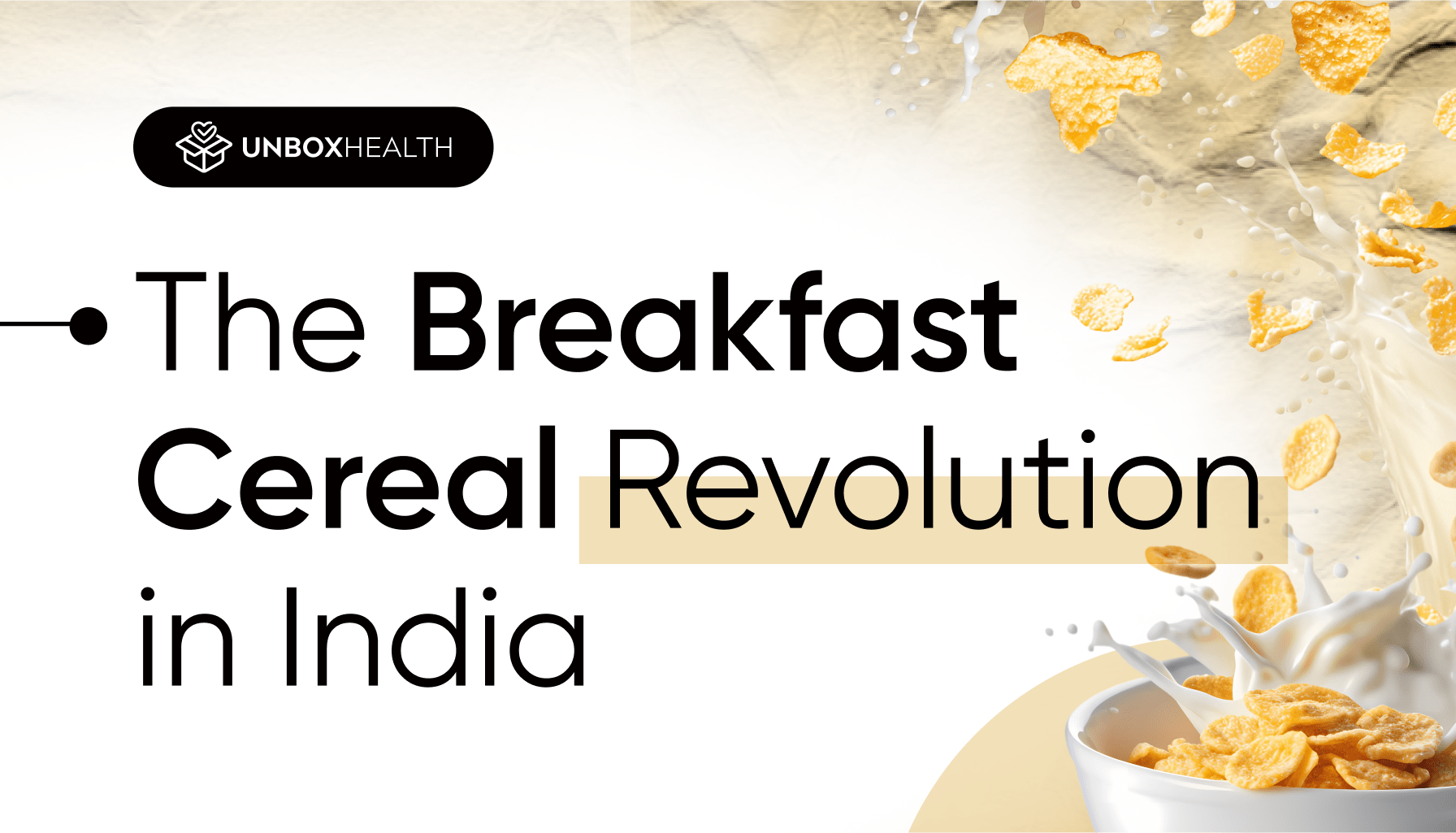Let’s be real. Most of us have stood in the cereal aisle, squinting at labels, wondering:
“Is this actually healthy, or just clever packaging?”
At Unbox Health, we ask that question every day—so you don’t have to.
Whether you’re switching from poha to granola or trying millet puffs instead of cornflakes, 2025 is seeing a major breakfast shake-up.
Indian cereal brands are promising big things: “high protein,” “no sugar,” “superfood blend.” But what’s real, and what’s just buzzword? We don’t come to know!
Let’s unbox it.
What Really Counts as a Breakfast Cereal?
Breakfast cereals include a range of grain-based, ready-to-eat or quick-to-prepare foods typically enjoyed with milk, yogurt, or plant-based alternatives. They’re made from corn, wheat, rice, oats, or millets and processed into flakes, puffs, clusters, or rolled forms. Most brands now fortify these products with vitamins, minerals, and protein to boost nutritional appeal, but not all are created equal.
Here’s a quick breakdown of popular types:
-
Cornflakes/Wheat Flakes – Crisp and nostalgic, but often stripped of fibre and dressed in added sugar.
-
Steel cut oats – A heart-healthy classic rich in beta-glucan, ideal for weight and sugar management.
-
Muesli – A blend of oats, dried fruits, nuts, and seeds—nutrient-rich but calorie-dense if sweetened.
-
Granola – Crunchier, often baked with honey or oil; great for texture but can sneak in hidden sugars.
-
Millet Mixes – The new entrant in 2023; millets like ragi, bajra, and jowar bring a local, gut-friendly twist.
In the 1970s, when global brands like Kellogg’s entered India, their cold cereal format clashed with our deep-rooted love for warm, home-cooked breakfasts. Fast forward to 2025, and the market has matured—but not blindly.
Indian consumers are no longer just calorie-conscious; they’re ingredient-aware. According to current industry data, the breakfast cereal market is growing at over 8% CAGR, and new-age D2C (direct-to-consumer) brands are at the forefront, offering clean-label, sugar-conscious, millet-rich options. (1)
But here’s the catch: marketing lingo often outpaces nutritional logic.
10 Health Claims to Watch Out For in your Cereals!
Brands know consumers scan labels—so they use buzzwords. Here are 10 red flags:
-
High Fibre – Might still be ultra-processed with low bioavailability.
-
Low Fat – Could be loaded with sugar or artificial flavours.
-
Whole Grain – May include refined grains too—check the ratio.
-
Fortified – Added nutrients don’t compensate for poor base ingredients.
-
Gluten-Free – Not always healthier unless you’re intolerant.
-
Natural/Organic – Doesn’t guarantee low sugar or sodium content.
-
Low Sugar: Watch for artificial sweeteners or hidden carbs.
-
Weight-Loss Friendly: Usually low in satiety-inducing nutrients like protein or fibre.
-
Heart-Healthy: Often based on partial truths around cholesterol.
-
Energy-Boosting: Often a cover for high simple carbs like maltodextrins.
How Unbox Health is Changing the Game
At Unbox Health, we’re committed to helping you see beyond the box. Our breakfast category isn’t just a list of products, it’s a carefully vetted selection that undergoes FSSAI-approved NABL-accredited European labs without any brand involvement and expert review for label accuracy, nutrient quality, and ingredient safety.
Every cereal you see in this category has been rated on:
-
Label Accuracy Score:
-
This score checks how closely the actual (lab-tested) values match what’s printed on the cereal’s nutrition label.
-
Key nutrients checked: protein, carbs, fats, fibre, sugar, saturated fat, unsaturated fat, trans fat, and sodium.
-
-
Non-Toxicity Score
-
This score measures the safety of the cereal by checking for harmful substances: aflatoxins (toxins from fungi), and heavy metals (lead, arsenic, cadmium, mercury).
-
- Nutritional Profile Score
- This score measures how nutritious the cereal is, considering both the quantity and quality of protein, carbs, fats, and sodium.
These three parameters together determine the overall rating for each breakfast cereal, helping consumers make safe and smart choices.
Explore the Unbox Health Breakfast Cereals Ratings and discover cereals that actually meet the nutrition claims they make.
References:
- https://www.imarcgroup.com/india-breakfast-cereal-market
